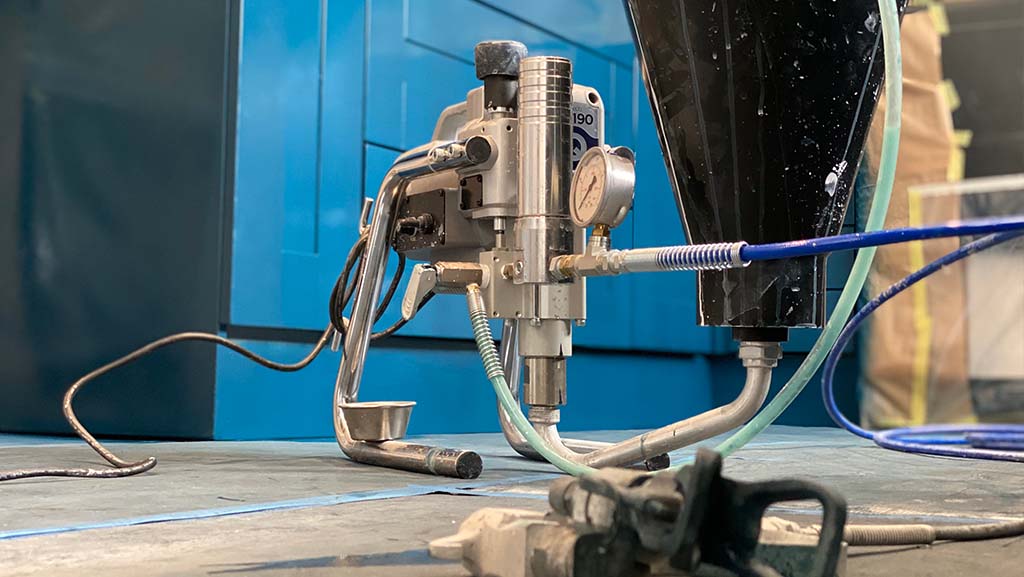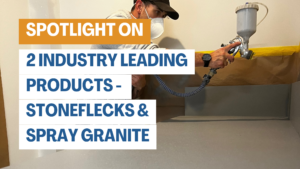This is a question that we are commonly asked, and the answer depends on several factors.
First is the type of person you are.
Are you an experienced decorator who is looking for a sprayer to spray in people’s homes, or are you a serious do-it-yourself person who wants to achieve a higher level of finish on their paintwork? We will look at both types of sprayers.
Secondly is the type of work that you would like to spray in your home.
Are you spraying walls and ceilings, or are you spraying doors and skirtings? You may be wanting to respray your kitchen, and finally, you may be thinking about respraying your uPVC windows. Each type of work would have a different approach, and not many sprayers will do it all.
Finally, is the type of paint you are thinking of spraying.
If you are spraying emulsion, then one type of sprayer will be better, but if you are spraying a solvent paint, then you would use a different type of sprayer. We will look at each situation in turn and try and give a simple answer for each.
Before we start, we will outline the three main spraying systems that you could choose from, and I am going to assume that you only want to buy one system and that you are only going to be doing one type of work. If you are doing multiple jobs, then you will be able to make up your own mind on how many systems that you want to buy.
Compressor and spray gun (Conventional)
This is the cheapest way to get into spraying, you buy a compressor set up, this will cost you around £200. This will spray thin paints such as the paint that is used for spraying uPVC windows. Make sure that you buy the whole system from one supplier; that way, you know that the gun and compressor are compatible with each other.
Download Now: The Ultimate Guide To Spraying [Free Template]
There is a lot of technical knowledge with a conventional setup, and unless you do a course, you are just guessing that the gun is compatible with the chosen compressor. The gun can be a bit fiddly to get your head around, and you need to make sure that you are spraying at the correct pressure.
A great way to get into spraying though, and once you get the hang of it, you will get a really good finish.
High Volume Low Pressure (HVLP) Turbine system
Although compressor systems are cheap commercially, they are only used in two areas. Car sprayers use them, but they work in a spray booth that has extraction, and this removes the overspray from the area and uPVC sprayers who work outside. If you are spraying in your house with a conventional system, you will get quite a bit of overspray that you will have to manage.
To overcome this problem, “high volume low pressure” spraying systems were developed that spray at around 9.5 psi and have a lot less overspray than a conventional system. The other advantage of HVLP turbine systems is that the turbine (that generates compressed air) is compact and easy to transport and store.
In most other ways, though, the HVLP system is very much like the conventional setup. The controls on the gun are the same, and the products that the system will spray are the same. This means that if you have started with a cheap conventional setup and then progress onto an HVLP, you will already have the skills and knowledge to use it.
The biggest drawback is the cost of a system. Depending on which brand you go for, you can pay anywhere between £1000 and £1500 for a system.
Airless paint sprayer
The previous two systems are completely safe to use but a little slow. The best sprayer for spraying large areas, walls, and ceilings quickly is the airless sprayer. The biggest drawback is the health and safety element. You are spraying at 2000 psi which can cause fluid injection injury. You need to know what you are doing and work safely.
A typical small airless will cost you around £600, so price-wise it is not too expensive. This system will spray most paints without thinning, which makes it a versatile sprayer to use to decorate your home.






